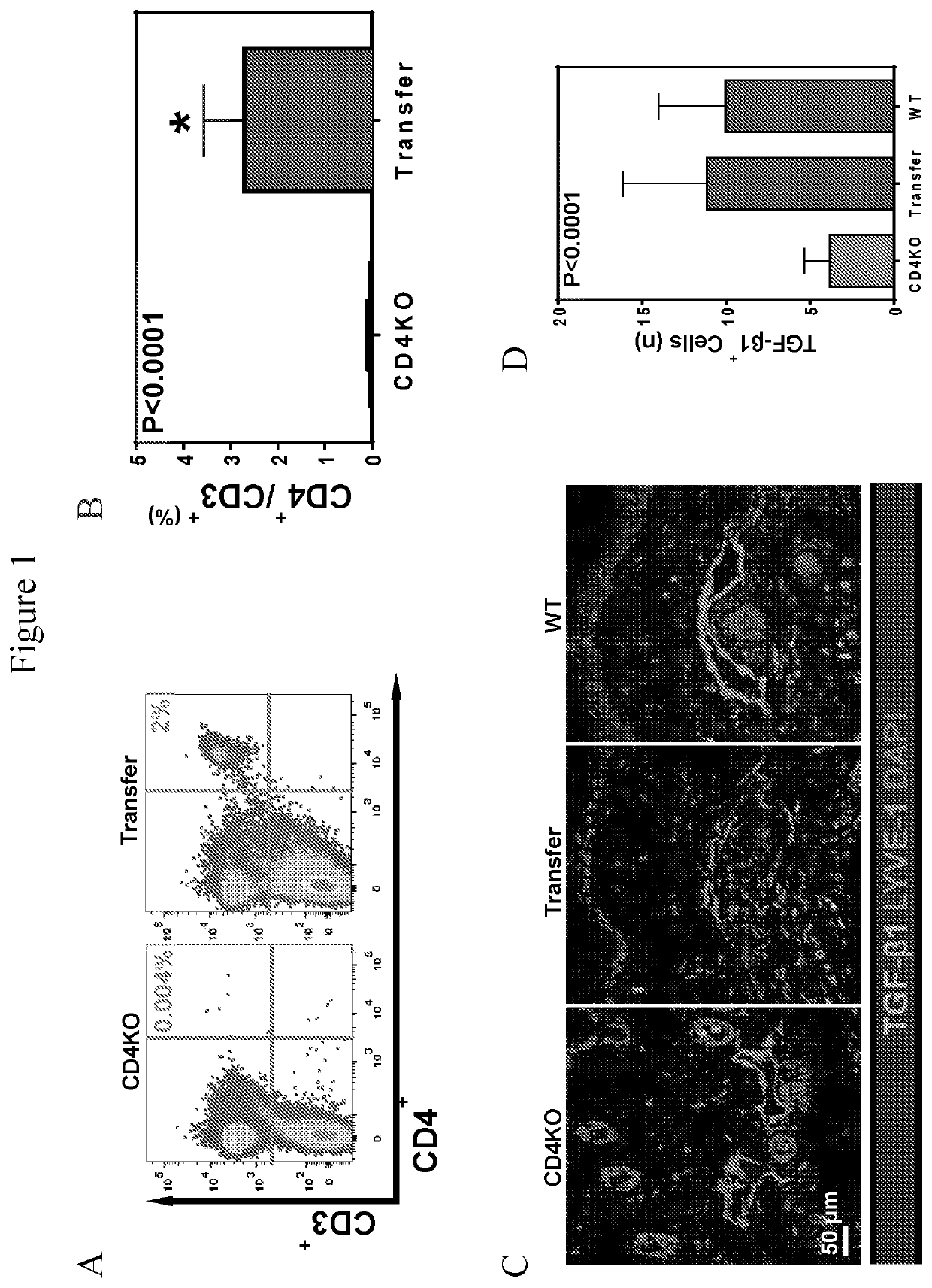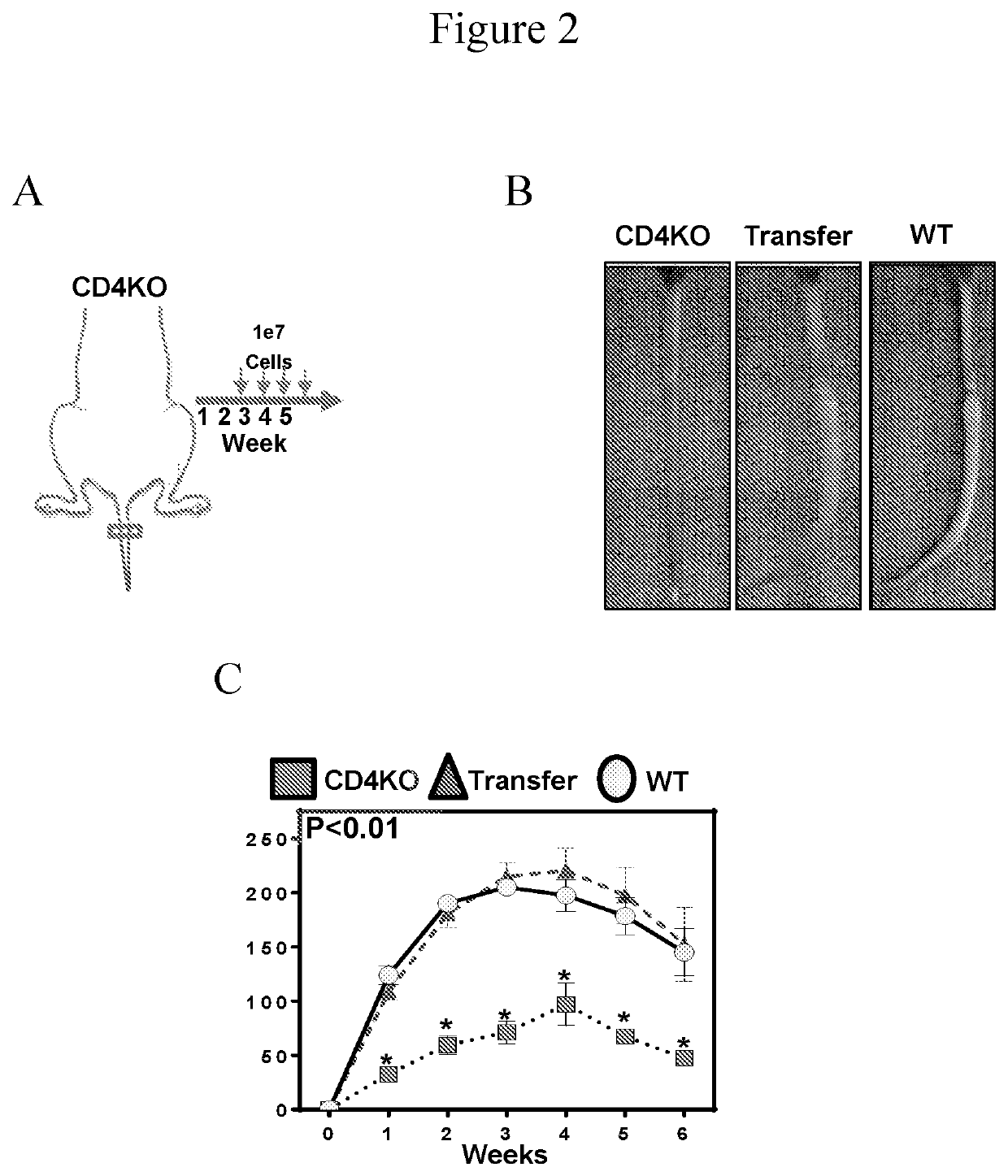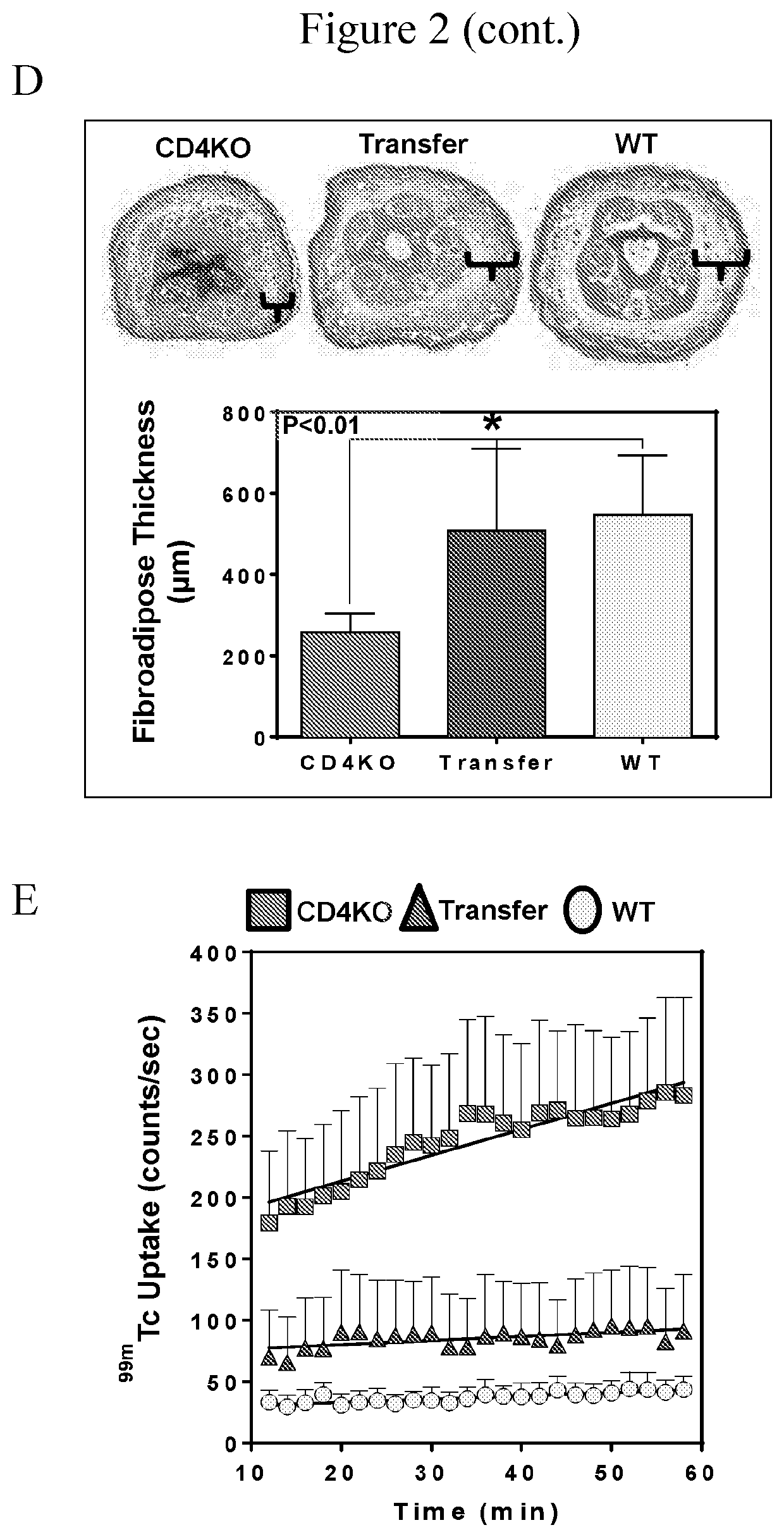Inhibition of sphingosine 1-phosphate receptor for treatment and prevention of lymphedema
a phosphate receptor and lymphedema technology, applied in the direction of instruments, drug compositions, extracellular fluid disorders, etc., can solve the problems of lymphedema, disfiguring and debilitating, interstitial fluid pooling,
- Summary
- Abstract
- Description
- Claims
- Application Information
AI Technical Summary
Benefits of technology
Problems solved by technology
Method used
Image
Examples
example 1
Adoptive Transfer of CD4+ Cells after Lymphatic Injury Results in Development of Lymphedema
[0057]We sought to determine whether adoptive transfer of naïve CD4+ cells to CD4KO mice subjected to lymphatic injury was sufficient to induce lymphedema. CD4KO mice underwent tail lymphatic ablation; beginning two weeks after injury, and then weekly thereafter for 4 weeks, the animals were adoptively transferred with 1×107 naïve splenic CD4+ cells harvested from uninjured donor WT mice. We confirmed successful CD4+ cell isolation and naïve status after expansion, as well as successful delivery of CD4+ cells to CD4KO mice, using flow cytometry on splenic single cell suspensions (FIG. 1A). Adoptive transfer of WT CD4+ cells to CD4KO mice resulted in development of phenotypic features of lymphedema including swelling, fibrosis (curvature) of the tail, and histological changes that were nearly identical to WT mice (FIG. 2A-2C). Likewise, adoptively transferred CD4KO mice had markedly impaired ly...
example 2
CD4+ Cells Regulate Lymphatic Pumping and Perilymphatic Inflammation after Lymphatic Injury
[0060]Previous experimental studies have shown that PLND results in physiological changes and impaired pumping in collecting lymphatics. Kwon et al., PloS one 9:e106034 (2014). Similarly, clinical studies have shown that patients with breast cancer related lymphedema have impaired lymphatic pumping capacity as compared to normal controls. Modi et al., J. Physiol. 583:271 (2007). However, despite that it is clear that lymphatic pumping is altered in lymphedema and may contribute to the pathology of this disease, the cellular mechanisms that regulate this response remain unknown. In these experiments, CD4KO mice underwent PLND, were allowed to recover for 1 week, and then were either injected with PBS (controls) or adoptively transferred with 1×107 naïve CD4+ cells harvested from wild-type mice once per week for 3 weeks (FIG. 3A). Analysis of control CD4KO mouse lymphatics 4 weeks after PLND dem...
example 3
Adoptive Transfer of CD4+ Cells Impairs Lymphangiogenesis and Generation of Lymphatic Collaterals
[0062]T cell-derived cytokines including interferon gamma, interleukin 4 and 13, and TGF-β1 have potent anti-lymphangiogenic effects. Savetsky et al., PloS one 10:e0126908 (2015); Shin et al.; Nat. Comm. 6:6196 (2015). In addition, NIR imaging studies have shown that lymphatic contractility improves over time after PLND due to lymphatic regeneration and lymphangiogenesis. Kwon et al., PloS one 9:e106034 (2014). Based on this background, we set out to determine how CD4+ cells regulate lymphangiogenesis after lymphatic injury. Interestingly, NIR imaging of CD4KO mice 4 weeks after PLND demonstrated formation of extensive collateral vessels draining towards the inguinal lymph nodes (FIG. 5A). In contrast, Transfer and WT mice had markedly fewer collateral lymphatics after PLND. These observations were confirmed with histological sections of hind limb skin demonstrating a nearly 2-fold incre...
PUM
| Property | Measurement | Unit |
|---|---|---|
| swelling | aaaaa | aaaaa |
| volumes | aaaaa | aaaaa |
| thickness | aaaaa | aaaaa |
Abstract
Description
Claims
Application Information
 Login to View More
Login to View More - R&D
- Intellectual Property
- Life Sciences
- Materials
- Tech Scout
- Unparalleled Data Quality
- Higher Quality Content
- 60% Fewer Hallucinations
Browse by: Latest US Patents, China's latest patents, Technical Efficacy Thesaurus, Application Domain, Technology Topic, Popular Technical Reports.
© 2025 PatSnap. All rights reserved.Legal|Privacy policy|Modern Slavery Act Transparency Statement|Sitemap|About US| Contact US: help@patsnap.com



